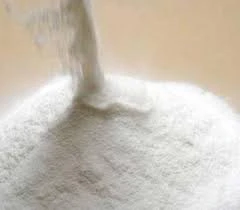Understanding HPMC A Versatile Cellulose Derivative
Hydroxypropyl Methylcellulose (HPMC) is a cellulose derivative widely recognized for its unique properties and extensive applications across various industries. As a non-ionic polymer, HPMC is derived from natural cellulose through a chemical modification process that enhances its functionalities. This article delves into the characteristics, uses, and benefits of HPMC, highlighting its versatility and significance.
Characteristics of HPMC
HPMC is characterized by its white, odorless, and tasteless powder form. It is soluble in cold water but not in organic solvents, making it useful in applications where water solubility is desired. The degree of substitution, which refers to the number of hydroxyl groups on the cellulose molecule that have been replaced by hydroxypropyl and methyl groups, can be adjusted during production. This leads to different grades of HPMC, each offering variations in viscosity, solubility, and thermal stability.
Moreover, HPMC is known for its emulsifying, thickening, and film-forming properties. These attributes are particularly beneficial in industries like food, pharmaceuticals, and personal care, where consistent texture and stability in formulations are crucial.
Applications of HPMC
1. Pharmaceutical Industry HPMC plays a vital role as a binder and excipient in drug formulations, especially in tablets and capsules. Its gel-forming ability enhances the release profile of active ingredients, making it a preferred choice in sustained-release formulations. Furthermore, HPMC is utilized in ophthalmic solutions and as a thickener in various liquid medications.
hpmc cellulos

2. Food Industry In food applications, HPMC acts as a thickening agent, stabilizer, and emulsifier. It is commonly found in gluten-free products, sauces, dressings, and baked goods due to its ability to improve texture and consistency. HPMC is recognized as a safe additive that meets regulatory standards, making it suitable for use in food products.
3. Cosmetics and Personal Care The cosmetic industry leverages HPMC for its thickening and film-forming properties. It is often used in lotions, creams, shampoos, and other personal care products to enhance texture, stability, and application properties. Additionally, HPMC imparts a luxurious feel to skincare products while ensuring prolonged moisture retention.
4. Construction and Paints In construction, HPMC serves as a thickener in cement-based materials, improving workability and adhesion. It is also used in paints and coatings to enhance consistency and stability, ensuring an even application.
5. Agriculture HPMC can be utilized in the agricultural sector as an agent in controlled-release fertilizers and soil conditioners, helping to improve the efficiency of nutrient delivery and water retention in soil.
Benefits of HPMC
One of the most notable advantages of HPMC is its non-toxic and biodegradable nature, which aligns with the growing demand for environmentally friendly products. Its versatility allows manufacturers to tailor formulations according to specific needs, enabling innovation in product development. Additionally, HPMC's ability to create stable emulsions and foams contributes to the overall quality and performance of end products.
In conclusion, Hydroxypropyl Methylcellulose stands out as a multifunctional cellulose derivative with extensive applications across various industries. Its unique properties make it an essential ingredient in pharmaceutical, food, cosmetic, and construction applications, among others. As industries continue to seek natural and versatile solutions, HPMC will undoubtedly play a pivotal role in shaping future developments, proving that innovation can coexist with sustainability.
-
A Comprehensive Guide to Methyl Ethyl Hydroxyethyl Cellulose: Applications and Industry InsightsNewsNov.24,2025
-
Understanding Methyl 2 Hydroxyethyl Cellulose: Uses, Benefits & Industry InsightsNewsNov.24,2025
-
Hydroxyethyl Methyl Cellulose HEMC: Industrial Uses, Benefits & Future TrendsNewsNov.23,2025
-
HEMC Cellulose: Versatile & Sustainable Industrial Polymer | YoungcelNewsNov.23,2025
-
Methyl Hydroxyethyl Cellulose: Versatile Building Block for Industry & SustainabilityNewsNov.23,2025
-
CAS 9032 42 2: Understanding Polyvinyl Alcohol's Impact on Industry & SustainabilityNewsNov.22,2025




